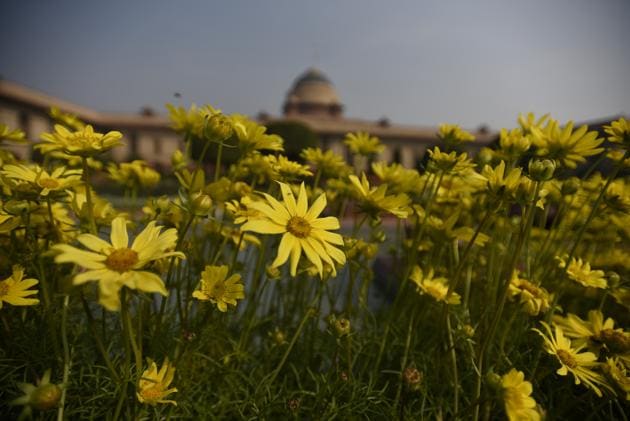Sermons in stones, and good in everything: Shebaba by Renuka Narayanan
Once, the most important garden in the Gangetic Plain was Jetavana, the Grove of Prince Jeta (Kumar).
With the most important garden in India, at Rashtrapati Bhavan, opening to the public today, and with the UP elections looming, one can’t but think of what was once the most important garden in the Gangetic Plain.

It was at Sravasti in present-day Uttar Pradesh and called Jetavana, the Grove of Prince Jeta (Kumar).
Sravasti was among the six wealthiest cities in the north in the Buddha’s time. A merchant-philanthropist of Sravasti called Anatha-Pindika, meaning ‘help of the helpless’ in its full sense, was an admirer of the Buddha. He wanted the Buddha to have a place to stay in Sravasti and was willing to do whatever it took to get the grove and build a monastery.
Prince Jeta did not want to sell his grove, and when Anatha-Pindika went on requesting him to part with it, he laughed, “Not even if you cover the entire ground of the grove with gold coins”.
Anatha-Pindika then took Prince Jeta to court, where the judges ruled that if Anatha-Pindika could meet the price mentioned, he had the right of purchase.
Such was Anatha-Pindika’s commitment that he actually collected money in cart-loads and began to cover the ground with gold. This overwhelmed Prince Jeta, who went to meet the Buddha to see Anatha-Pindika’s inspiration for himself.
Like others, Prince Jeta was impressed and touched by the Buddha’s personality and astounded that a royal prince, the designated heir to his father’s throne, could have walked away from position, power and wealth to genuinely serve the common people.
He donated a portion of the grove that remained uncovered and used Anatha-Pindika’s money to build a gateway and room there. Five hundred bankers stood with Anatha-Pindika at the inauguration. Both the establishment and the commoners backed the Buddha.
I have not managed to get to the excavated site of Jetavana yet; I do hope I will. Not only would a visitor get to see the remains of the Buddha’s own room and Anatha-Pindika’s mansion, but also the chaitya or commemorative building made for someone else we know rather well, even though he roamed about Uttar Pradesh in the 6th century BCE — Angulimala, the murderous bandit who was on a gruesome mission to wear a garland of human thumbs, until he was transformed into a gentle, meditative soul by the Buddha.
Read: All we need is love – but whose, exactly, asks Renuka Narayanan
It’s said that a big pipal at the garden entrance, descended from the Bodhi tree at Bodh Gaya, was originally planted by Ananda, the Buddha’s faithful disciple. Ananda’s idea was that the pipal could be the local sangha’s focal point during the Buddha’s absence from Sravasti.
Accordingly, the Buddha is said to have blessed the tree and meditated all night under it and I’ve heard that modern visitors to Jetavana like to do that, too, to feel close to him.
The Buddha must have really liked Jetavana for he often returned to it for the important chaturmaas (monsoon) retreat — 19, 24 or 25 times; sources differ on the number of visits. He is said to have composed and preached 871 sutras there. Certainly, the thought of Jetavana is both piquant and poignant today.
shebaba09@gmail.com
The views expressed are personal





